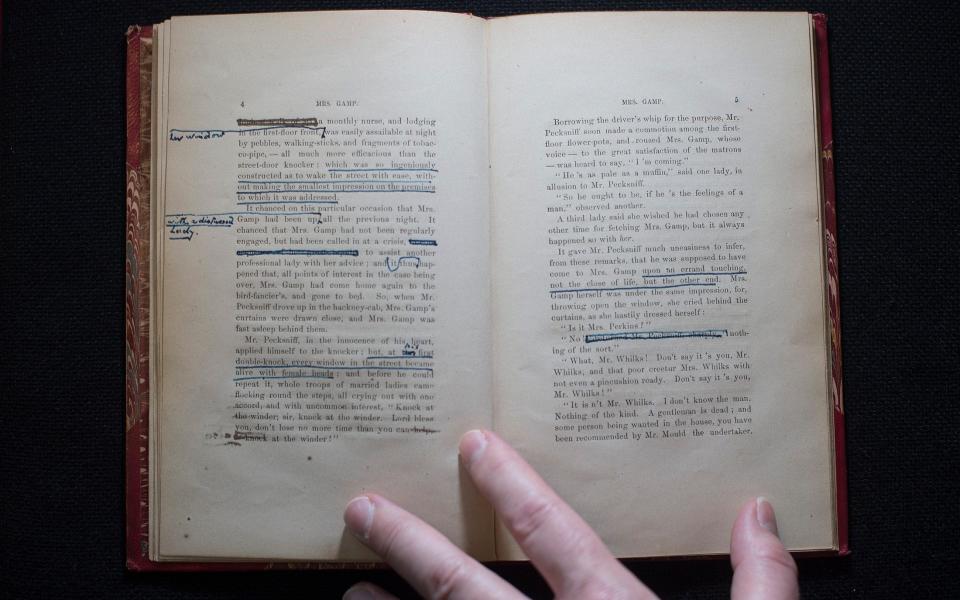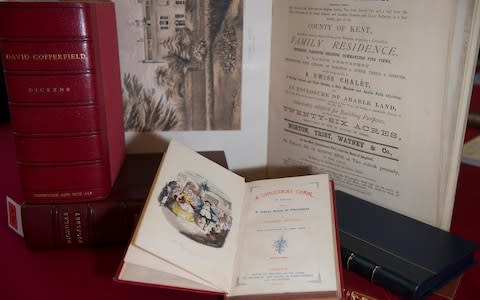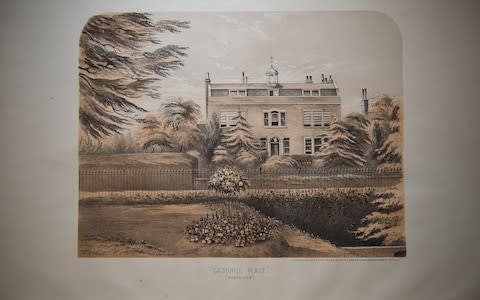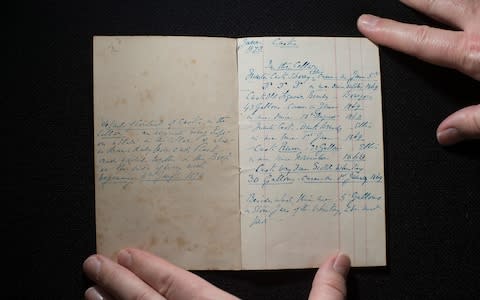Secret of Charles Dickens's dramatic public readings all in his book annotations

It was said that when Charles Dickens staged readings of his works young ladies in the audience would faint, such was the force of his rendition of key scenes such as Nancy’s death in Oliver Twist.
One of the secrets to the success of his readings, which drew enthusiastic audiences of both sides of the Atlantic, can now be revealed.
Before taking to the stage Dickens would underline key passages in the work he was to recite, adding and crossing out words for added emphasis.
One such volume, a rarely seen heavily annotated prompt copy of Mrs Gant, is now going on sale as part of the most important auction of his work still in private hands.
The sale, at Sotheby’s next month, will see hundreds of volumes of Dickens go under the hammer as part of 243 separate lots, starting at an estimated £150 and rising to £60,000 each.

Many of the books - all of which formed part of a unique collection of Dickens’s work amassed by Lawrence Drizen - were inscribed by the author, with several containing moving dedications to his closest friends and confidants.
Dickens first hit on the idea of undertaking a reading tour to raise much needed funds in 1858, shortly after purchasing Gad’s Hill, a large country pile in Rochester, Kent.
Against the advice of his friend John Forster, who thought it undignified for a writer to perform for money, Dickens began a series of paid readings, first in London and then throughout the country.
Dr Philip Errington, the director of printed books and manuscripts at Sotheby’s, said: “Dickens didn’t do anything unless he was paid. And he was very clever about adapting what he was doing and publishing to satisfy public demand.”
Dickens threw himself into the readings. A frustrated actor he performed the parts, in the words of one contemporary observer, “as though he was presenting it in costume on the stage”.

Dickens’s tour of the US was so successful that he extended it over for two years, between 1867 and 1868, reading from his works to packed theatre houses across the continent.
His earnings from public readings, and of course the serialisation and sales of his novels, eventually paid for Gad’s Hill.
It was the fulfillment of a long held ambition. Dickens recalled passing the house as a child growing up in Kent and hearing his father say that if he worked hard enough he might one day be able to afford to buy it.
As well as Mrs Gant the sale includes copy of his Child’s History of England, dedicated to Katie Cornelius, the six-year-old daughter of his favourite housekeeper Anne Brown, whose education Dickens had paid for.
Movingly, there is also a copy of David Copperfield, the semi-autobiographical novel which Dickens regarded as his “favourite child”, dedicated to the Reverend T.W. Goldhawk, the vicar who baptised his son Walter 22 years earlier. In an enclosed letter to Goldhawk, Dickens relays to him the sad news of Walter’s death the previous December.

The sale, which is expected to raise as much as £1.5 million, throws new light on the relationship Dickens had with his fans and admirers.
The writer also presented a signed volume of David Copperfield to the tool makers Brookes of Sheffield, apologising for unknowingly using their name throughout the book, not realising it was an existing business.
The auction also includes a copy of the original auction catalogue for Gad’s Hill, which he bought in March 1856 for £1,700.
Mr Denizen, a former chartered accountant, now aged 84, said he had decided to sell his collection of 55 years so that it could enjoy a life of its own beyond him.

In a forward to the sale catalogue he writes: “I have reached the age when the works need to be dispersed to other collectors, old and young, who will welcome the opportunity to acquire such fine books.”
One of the last things Dickens wrote was not a novel, but an inventory of the contents of his wine and spirits cellar at Gad’s Hill, carefully noting down what was on his shelves - including casks of sherry, whisky and brandy.
Later that day he spoke to his daughters for the last time, before collapsing and dying of a brain hemorrhage a few days later, on 8 June 1870. The handwritten cellar inventory is also on sale, with a guide price of £4,000 to £6,000.
* Highlights from the Lawrence Drizen collection will be on display at the Charles Dickens Museum in London from 3 to 6 September, with the auction taking place at Sotheby’s on September 24.

 Yahoo News
Yahoo News 